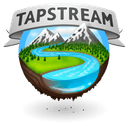Overview
RudderStack supports syncing Lotame’s BCP Pixel and DSP Pixel through our API calls. You can provide multiple BCP and DSP templates to RudderStack, and it automatically includes these sources of image pixels in the web app. Syncing of DSP Pixels happens once in 7 days, RudderStack stores the sync timestamp in storage. On every page call, RudderStack checks for the event payload and the last syncing timestamp. If it is before 7 days or more, RudderStack automatically triggers the syncing.
Add Lotame as a destination in RudderStack and:
- Ensure timely sync of your Lotame Pixels
- Provide multiple BCP and DSP templates for syncing to Lotame
- Use the Android SDK to sync Lotame Pixels via your Android app
- Skip any manual configuration or syncing tasks and save valuable time
Lotame is a data enrichment platform used mainly in the marketing, publishing, and digital advertising industries. Its real-time data management solutions help you find new customers, increase engagement, and LTV.










